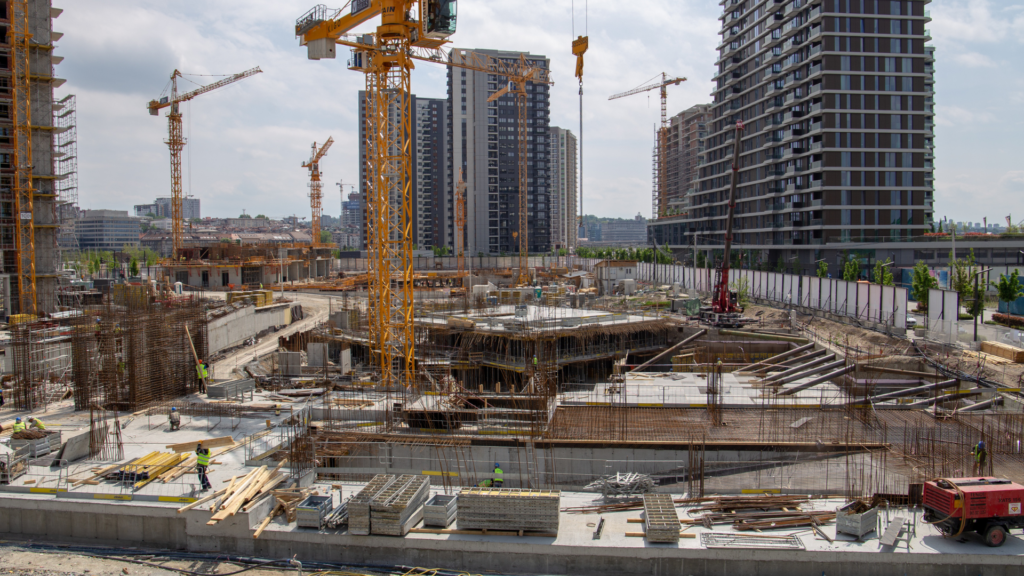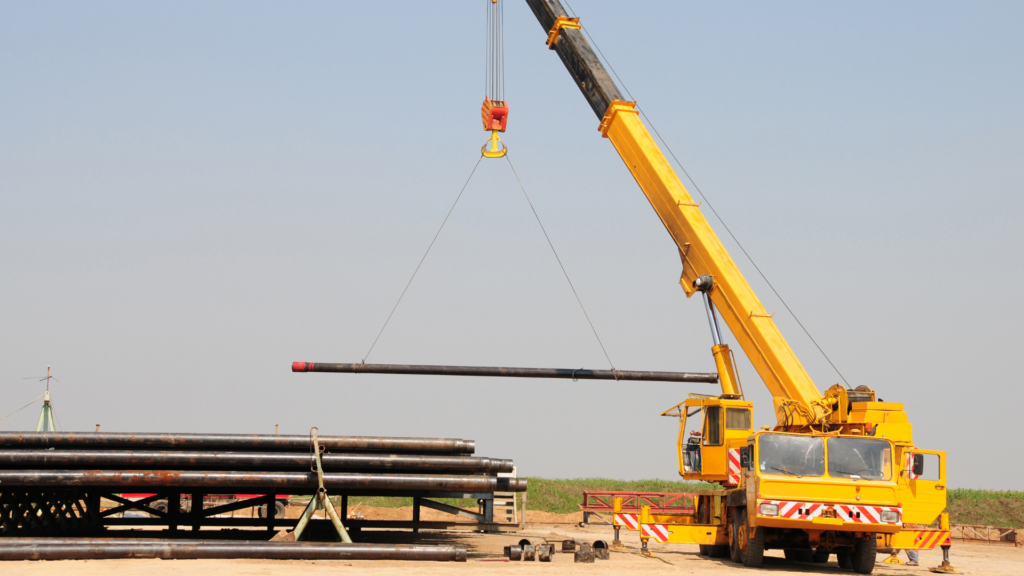When contractors and suppliers in Kansas aren’t paid for their work on a construction project, they can file a mechanics lien to ensure they receive payment. A mechanics lien serves as a legal claim, granting the unpaid party a security interest in the property.
At CRM Lien Services, we specialize in ensuring you get paid quickly and reliably. We can prepare and file mechanics liens for you, taking into account Kansas construction lien law and state-specific rules and regulations, including the need for an adequate and ascertainable description of the real estate.
This guide explains the essential rules, requirements, and deadlines necessary for filing a mechanics lien Kansas.

Key Takeaways
- Mechanics Lien Rights in Kansas: Contractors, subcontractors, and suppliers in Kansas have the right to file a mechanics lien if they are not paid for their work, but only if materials are actually used in the project. This includes those furnishing labor under the Kansas mechanics lien laws, which support claims for labor and materials provided on real estate projects.
- Filing Deadlines: Mechanics liens must be filed within 3 to 4 months, depending on the claimant’s role. For commercial projects, this deadline can be extended to 5 months with proper notice.
- Lien Requirements: A Kansas mechanics lien must include specific information, such as a description of the property and an itemized statement of the claim, and must be notarized to be valid.
Who Can File a Kansas Mechanics Lien?
In Kansas, mechanics lien rights are granted to contractors, subcontractors, suppliers, and any person furnishing labor who provides labor or materials to contractors or subcontractors.
A contractor is defined as anyone who provides labor or materials directly under a contract with the property owner to improve the property. A subcontractor is someone who takes on part of the work from the original contractor or another subcontractor to fulfill services or work required under the owner’s contract.
For a supplier to qualify for lien rights, the materials must be actually used in the project; simply delivering materials to the job site is not enough to secure lien protection.
Architects and engineers are only entitled to lien rights if the project begins. If they perform services but the project doesn’t commence, they are not granted lien rights.
In Kansas, sub-subcontractors, suppliers to suppliers, and employees of contractors or subcontractors are not eligible for lien rights.
When is the Deadline to File a Kansas Mechanics Lien?
The deadline to file a Kansas mechanics lien varies based on the claimant’s role in the project.
- Direct Contractors (those who have a contract directly with the property owner) must file their mechanics lien within 4 months of the last date they provided labor or materials to the project.
- Other Claimants (those not in direct contact with the property owner) must file their mechanic’s lien within 3 months of the last date they provided labor or materials to the project.
Important: For commercial projects, the filing deadline can be extended to 5 months if a proper notice of extension is filed with the district court in the county where the project is located. This notice must also be sent by both certified and regular mail to the property owner.
Mechanics liens in Kansas have precedence over other financial claims, including federal tax liens, ensuring contractors and suppliers are paid even when competing against federal authorities.
What Information Must Be Included in a Mechanics Lien Kansas?

A Kansas mechanics lien statement, as outlined in Kan. Stat. §60-1102, must include the following details about the property subject to the lien:
- Claimant’s information
- Property owner’s information
- Description of the property
- The lien amount
- An itemized statement of the claim or a copy of the written contract/promissory note
Is a Legal Property Description Required in a Kansas Mechanics Lien?
No, Kansas does not require a legal property description for a mechanics lien. The statute simply calls for a “description of the property,” which has been interpreted to mean that the description should allow someone familiar with the area to identify the premises with reasonable certainty, excluding others.
However, providing a legal property description remains the clearest and most accurate method to “identify the property,” and Kansas courts have been increasingly stringent in determining what qualifies as a valid property description for a mechanics lien.
Does a Kansas Mechanics Lien Need to Be Notarized?
Yes, under Kansas law, a mechanics lien must be notarized to be valid and accepted for recording.
Where Should I File and Record a Kansas Mechanics Lien?
Kansas mechanics lien claims must be recorded with the clerk of the district court’s office. To ensure your mechanics lien is valid, it must be filed in the county where the project is physically located.
Each county in Kansas has its own specific rules and requirements.
Do I Need to Send a Kansas Preliminary Notice?
It depends. Parties who contract directly with the property owner are not required to send any notice before filing a lien. Additionally, no notice is needed from any party if the project is non-residential.
However, subcontractors, laborers, and suppliers must send notice before filing a lien if they are working on or supplying materials for a residential project.
A Warning Statement must be sent to the owner for repairs, alterations, or remodeling of an existing residential property (occupied by no more than two families and not used for commercial purposes). This notice alerts the owner that a mechanics lien may be filed if payment is not made.
For the construction of a new residential property (whether a spec or custom home occupied by no more than two families and not used for commercial purposes), a Notice of Intent to Perform is required.
Is the Kansas Preliminary Notice Requirement Met When Sent or Delivered?
Notices are deemed delivered when sent by certified mail with a return receipt requested and are considered filed when recorded by the clerk of court. However, although the Kansas preliminary notice is regarded as delivered upon sending, the responsibility remains with the sender to prove that the notice was actually received.
In the case of Owen Lumber Company v. Chartland (2007), a Kansas court clarified the interpretation of the state’s preliminary notice statute. The court rejected the “presumption of delivery” principle because the lien law specifically requires a return receipt. The court emphasized that “[w]ith respect to mechanic’s liens, the restricted notice requirement of Kan. Stat. Ann. § 60-103 replaces the presumption of delivery with the sureness of proof by the return receipt.”
Essential Things to Know About Kansas Mechanics Liens

Contractors and suppliers have strong lien rights in Kansas. If they aren’t paid for their work on a Kansas project, they can file a lien to expedite payment and protect their interests. However, there are specific rules and requirements to follow.
Here are five key points you need to know about Kansas mechanics lien law:
1. Who is Entitled to Mechanics Lien Rights?
In Kansas, mechanics lien rights are granted to contractors, subcontractors, and suppliers who provide materials or labor to contractors or subcontractors. For suppliers to have lien rights, the materials must be used in the project; mere delivery doesn’t qualify. Architects, engineers, and other design professionals only have lien rights if the project commences. If the project doesn’t start, they cannot file a lien.
Those not entitled to file a mechanics lien in Kansas include sub-subcontractors (third-tier participants), suppliers to suppliers, and employees of contractors or subcontractors.
2. Filing Deadlines for a Kansas Mechanics Lien
The deadline to file a mechanics lien in Kansas is generally 3 to 4 months. General contractors have 4 months from the date they last provided services or materials on a project, while subcontractors (who don’t have a direct contract with the property owner) have 3 months.
For both general contractors and subcontractors on commercial projects, the filing deadline can be extended by submitting a notice of extension with the county’s district court. If properly filed and sent to the property owner via certified and regular mail, this extends the deadline to 5 months from the date of the last work (an additional month for general contractors and two extra months for subcontractors).
3. Preliminary Notice Requirements for Residential Projects
While general contractors aren’t required to send preliminary notice, and it’s never needed for non-residential properties, subcontractors, laborers, and suppliers must provide preliminary notice for residential projects. If the project involves altering or repairing an existing property, the participant must send a Warning Statement to the owner. For new construction, a Notice of Intent to Perform is required. Failure to send these notices in time will invalidate the lien.
4. Importance of a Valid Property Description
Although a legal property description isn’t technically required, Kansas courts have become increasingly strict on what constitutes a valid property description for a mechanics lien. The best way to meet the requirement for a description that “enables a person familiar with the locality to identify the premises with reasonable certainty, to the exclusion of others” is by providing a legal description of the property.
5. Priority of Kansas Mechanics Liens
Mechanics liens in Kansas have priority over liens or other encumbrances that arise after work on the project has commenced. However, this priority is tied to the earliest date work was started by a lien claimant with an unsatisfied lien rather than the beginning of the project itself. If the property’s sale doesn’t generate enough funds to fully satisfy all mechanics liens, they are paid proportionally based on the amount owed to each claimant—there is no hierarchy among competing mechanics liens.
How to File a Mechanics Lien in Kansas?
Construction industry participants often complete their work and find themselves waiting for overdue payments, which may never arrive. This is a widespread issue affecting construction companies nationwide, including those in Kansas.
The nature of construction payments, where most labor and materials are provided before payment, combined with complex pay applications, pay-when-paid clauses, workmanship disputes, and more, creates numerous challenges that stand between construction companies and the payments they rightfully deserve.
However, it’s not all bleak. There are legal tools designed to help construction professionals secure fair payment for their labor and materials, embedded in the laws of every state. These tools—mechanics liens (and bond claims)—are highly effective in ensuring construction companies receive the payment they’ve earned.
Mechanics liens work in at least 17 different ways to help you get paid, but most importantly, they just work. A mechanics lien gives the claimant a security interest in the improved property, empowering construction participants to recover the money they’re owed and virtually guaranteeing payment.
If you’ve decided to file a mechanics lien in Kansas, this step-by-step guide will walk you through the entire process, from start to finish. Before proceeding, it’s crucial to understand that there may be preliminary notice requirements (and always timing requirements) that must be met before filing a valid Kansas mechanics lien. Filing a lien on your own can be a complex and time-consuming task, but if you’re ready to tackle it, just follow the steps outlined below.
Ensure Your Kansas Mechanics Lien Contains the Required Information
It’s essential to make sure your Kansas mechanics lien includes all the information specifically required by Kansas lien laws. Mechanics liens are statutory, meaning strict compliance with the statutory requirements is necessary. Failing to include certain information on the lien claim isn’t just an oversight—it can invalidate the entire lien. Therefore, it’s critical to take great care in obtaining and including the proper information in your lien document.
Kansas mechanics liens must include a verified statement containing the following:
- The owner’s name
- The claimant’s name and address (sufficient for service of process)
- A description of the real property to be charged with the lien
- A reasonably itemized statement and the amount of the claim (if the claim amount is evidenced by a written instrument or promissory note, a copy of that document may be attached instead of the itemized statement)
- A signature verifying the lien by affidavit
Special Considerations Regarding Timing of Kansas Mechanics Liens
In Kansas, mechanics liens generally must be filed within 4 months of the last date labor or materials were provided for a direct contractor and within 3 months for all other parties. However, for non-residential projects, this deadline can be extended to 5 months for all parties if the claimant files a notice of extension within the original lien deadline and sends the notice by certified and regular mail to the general contractor or construction manager and by regular mail to the property owner.
How to File a Mechanics Lien Kansas

Now it’s time to file your mechanics lien Kansas with the clerk of the district court in the county where the property is located.
- Prepare the lien form, ensuring it includes all the required information mentioned above, and sign the document with the verification statement. While the lien must be verified, it doesn’t necessarily need to be notarized—but notarizing it can facilitate a smoother recording process.
- Send the original notarized copy to the district court clerk’s office in the county where the property is located. You can deliver the lien by mail, FedEx, or in person (either by you or a courier).
- Include the correct recording fees with your lien. Liens are often rejected due to improper fees, which can cause delays—an issue since liens are time-sensitive. Recording fees vary by county and can be determined by contacting the county clerk, checking the clerk’s website, or inquiring in person if you’re delivering the lien for filing.
- Ensure compliance with specific county requirements, such as margin rules or the need for a county-specific cover page. This information can be obtained by contacting the clerk’s office.
- If you mailed the lien, include a self-addressed stamped envelope with return instructions to receive a copy of the recorded lien for your records.
- Serve a copy of the mechanics lien as described in the next section.
How to Serve a Kansas Mechanics Lien
Filing the lien with the clerk of court doesn’t complete the process—you must also serve a copy of the lien to the interested parties. The service requirements vary based on the claimant’s role.
- Original contractors must serve a copy of the lien on the property owner via both certified and regular mail.
- Other parties (those without a direct contract with the property owner) must serve the lien on the property owner and any party responsible for payment by one of the following methods:
- Personal service as outlined in K.S.A. 60-304 for in-state service, or K.S.A. 60-308 for out-of-state service
- Restricted mail
- Posting the lien in a conspicuous place on the premises if the address of the owner or responsible party is unknown and cannot be determined with reasonable diligence
The simplest way to accomplish the required service is to send a copy of the lien to all relevant parties via restricted mail.
Once the lien has been filed and served, your Kansas mechanics lien is in place to help you secure the payment you’ve earned. While this is a powerful tool, it may not be the final step—your lien could be challenged or deemed invalid, or the filing alone may not prompt payment. You may still need to enforce your lien claim through a foreclosure action.
Remember, just because a lien is recorded doesn’t mean it’s automatically valid, and similarly, a property owner’s claim that it’s improper doesn’t necessarily invalidate it.
Finally, a Kansas mechanics lien remains effective for one year from the date it was filed. Recording a mechanics lien is a powerful way to ensure you are paid for your work. The guide above can help you navigate this process and ensure you’re treated fairly when it becomes necessary.
Get in Touch
In conclusion, navigating the mechanics lien process in Kansas is crucial for contractors, subcontractors, and suppliers to secure the payments they deserve. By understanding the key rules, deadlines, and requirements outlined in this guide, you can effectively protect your rights and ensure you’re compensated for your work.
At CRM Lien Services, we have been serving customers across the country with required reference documentation for lien claims since 1986. We assist property owners in navigating the mechanics lien process, informing them about their rights and responsibilities, including providing notices, securing payment, and releasing mechanic’s liens.
We have a wealth of expertise, are licensed and insured, and have a team of highly knowledgeable document processors. If you’re looking for a straightforward process for filing a mechanics lien, give us a call or shoot us an email.
